People have their own ways to explore other activities that they like to do as their extracurricular activities, and there are many sports or activities out there for them to explore. Among those various activities, there is also an activity called fishing. Generally, fishing can be done in both freshwater and saltwater. However, freshwater fishing is a good start for those who are new to fishing.
Freshwater fishing means fishing in the lakes, rivers, creeks, streams, and ponds. Freshwater fishing is considered a fun activity to do; plus, it can also be done almost anywhere in this world and at any time. You can spend your time doing freshwater fishing while you are on a trip with your friends and family. However, there are multiple ways to try this activity since there are many types of freshwater fishing available.
To do freshwater fishing, you need to understand each type of freshwater fishing, when and how to fish, plus the techniques to choose your fishing gear, bait and lure to catch more fish species. Why? These understandings will help you not waste your time and help maximize your chance to catch more species.
However, it is not an easy thing to do if you are a new angler. Here below is brief information on different kinds of freshwater fishing, when and how they are done, and other suggestions for you to choose your best fishing gear, baits, and lures.
Types of Freshwater Fishing
1. Dock Fishing

If you are a new angler, this type of freshwater fishing is a good start for you. Not only is it for a beginner, but it is also for children since no special gear is required for this fishing type.
Dock fishing is considered a great way to find fish, and it gives you perfect coverage of the fish you are looking for. However, dock fishing also allows you to practice the art of hooking or fishing while you get a chance to feel for the waters as well.
2. Spearing or Noodling
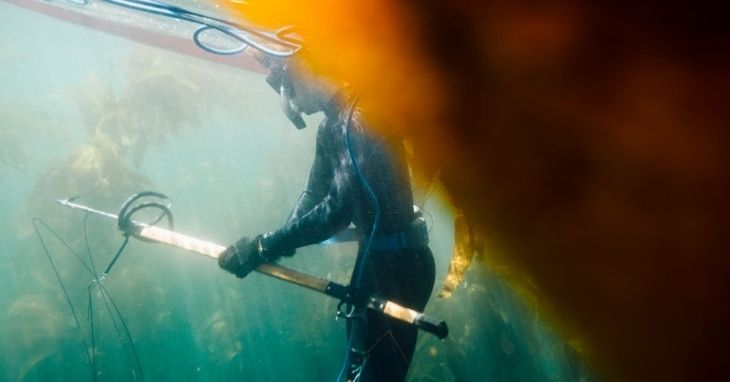
Another type of freshwater fishing that lets you enjoy spearing or noodling. With this type, you can catch larger fish that usually ignore your baits or lures. The larger fish that are mostly caught by the anglers with this method is the Catfish. Spearing is a popular method among millennials.
The traditional way of spearing is holding the spear and throwing it at the fish, while the modern way uses either a pole spear or a speargun into the fish. Noodling is considered a basic and traditional method for freshwater fish since all you need to do is use your fingers to catch the fish. A wiggle of your fingers could become bait for attracting the fish to grab onto your hands.
3. Boat Fishing
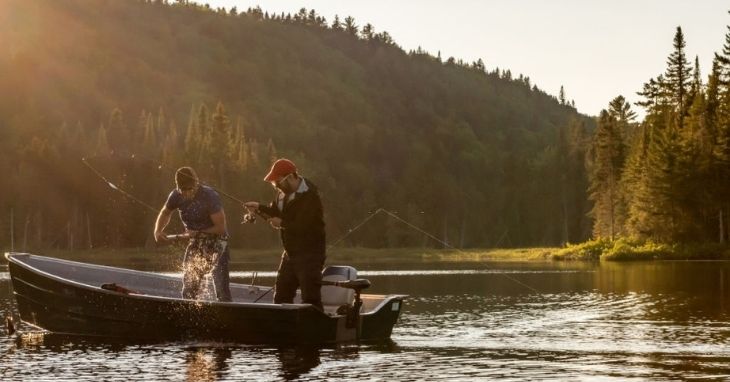
This is the most popular freshwater fishing type. Why? The reason is that you, as an angler, will have access to more varieties of fish species in the freshwater. The boat could be anything, including a large boat, a small boat, a canoe, or even a kayak, but the type of boat also depends on where you fish as well.
Boats are necessary for trolling, depending on the situation. However, it is ideal for giving you a way to get to various water sections during your fishing before casting your line.
4. Freshwater Fly Fishing
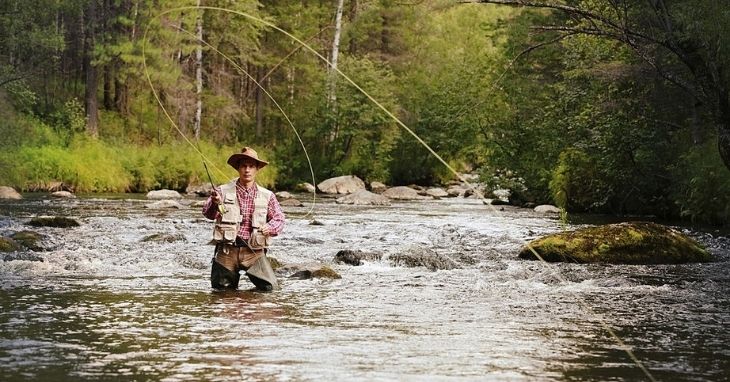
If you have never done this type of freshwater fishing before, this freshwater fly fishing is an art form. The most suitable choice for fly fishing is in the river. Generally, the fish are less pressured, and the river’s surroundings could protect them and the anglers from the weather in many cases.
A tied fly used in freshwater fly fishing is designed to imitate the natural insect look to attract the fish. Most fly fishers considered themselves trout fishermen since fly fishing is ideal for catching trout and other species. However, this kind of fishing requires more knowledge and technique since it is not as simple as other fishing methods.
5. Ice Fishing
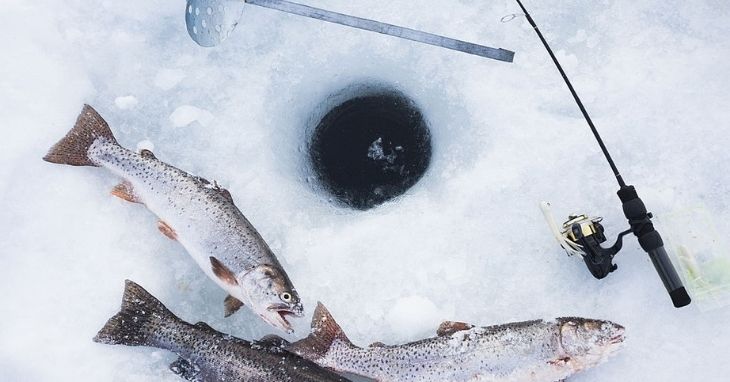
When it comes to ice fishing, the fisherman catches the fish with fishhooks and lines or spears through an ice hole in the frozen water. Moreover, ice fishing is also considered an effective way to catch any freshwater fish species in winter. It is a different space, pleasure, and excitement for fishers.
This type of fishing is very popular in the north. To create a hole, the fishers need an auger, a special hole-making tool. With ice fishing, you can catch larger Northern Pike, and the species such as Crappies and Bass, while those species can be caught in summer.
When to Freshwater Fish
After going through all the freshwater fishing types, you might also wonder about the best time to do freshwater fishing. Time for fishing is also one of the influential factors to help you catch more fish as well. However, you don’t have to worry about this. When you plan to go freshwater fishing, there are categories to help you decide when to fish.
Those categories include turnover, time of the year and the seasons, weather conditions, and water temperature. As a freshwater angler, you need to have a solid understanding and foundation on how each category will affect your fishing experience.
Seasonal Changes
Turnover occurs when the bottom and the surface of the waters exchange within the water body, and it happens at different times of the year, such as in Spring, Summer, and Fall. Understanding the time that these turnovers occur will benefit you with your fishing.
1. Spring Turnover
When Spring arrives, the water surface starts to heat up, and as a result, it sinks and is replaced by cooler and deeper water. This exchange will be out when the water temperature is more uniform throughout the water body. However, when Summer comes, there will be a difference between the effect, such as the stratification or the water separation into the clear layers.
To get a fish on your line in Spring turnover, you can find more shallow water to increase your odds. The best time to fish in this Spring turnover is in the afternoon to early evening.
2. Summer Turnover or Summer Stagnation
In Summer, the warmer water layers were created over, the colder layers. Between the warm and cold layers, there is a middle layer called the thermocline, which is a barrier for preventing the water from further mixing with deeper water, and it depends on the size of body water.
This thermocline could sit between 2 to 10 feet beneath the water surface. However, this is the area where you want to put your baits and lures. The best time of the day during Summer turnover is in the early morning and afternoon to early evening.
3. Fall Turnover
During Fall, the weather will surely be cooled off, so does the water surface, and it will start to mix with cooler, deeper waters below the thermocline. The thermocline will disappear as time goes on, and the water will create a uniform temperature in which the fish could move more freely.
However, for you, as an angler, this can be considered as both a good and bad thing because the fish is more active, making it more difficult to find the fish, but it could be anywhere in the water. Afternoon to early evening is the best time of the day for fishing in Fall turnover.
Weather Condition
Weather conditions are the potential factor that is going to influence your freshwater fishing experience. Variable weather conditions impact how the fish bite when your trip is being planned as the following:
1. Cloudy Days and Overcast Skies

There will be more clouds during the cloudy day, and the waters will be kept from getting too hot because the cloud helps prevent light penetration. This results in fishing improvement, making cloudy days and overcast skies signals for anglers heading out to the water to trick cruising fish onto the line as they feed.
2. Storms
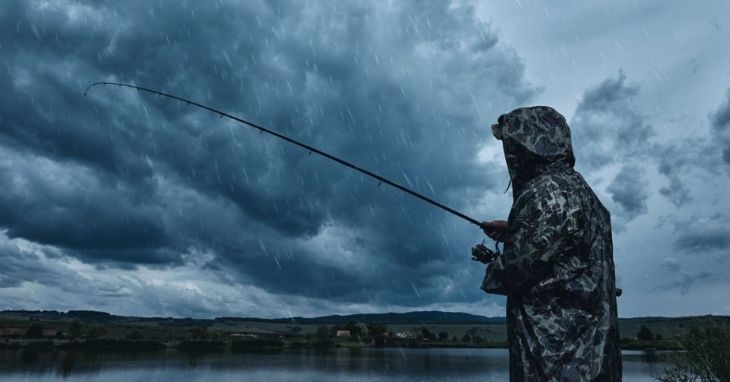
On some occasions, cloudy days could bring storms as well. It is necessary to consider the storms for your safety, plus the change in barometric pressure that the storm brings also makes the fish sensitive.
In the case of cold fronts, the feed activity is increased in the hours immediately before the storm passes, but slower activity for one or two days after the front comes through. However, with the warm fronts, the fish will go on a feeding frenzy as surface water temperature increases.
3. Rain
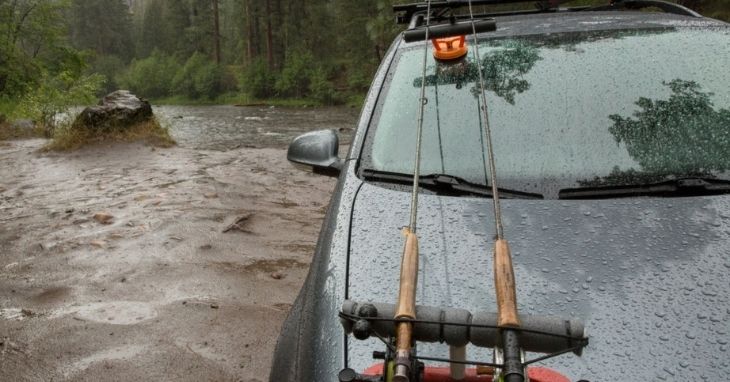
It will be good for you if it is light rain, especially in Spring or Summer, due to the fact that the fish’s visibility is impeded, and it will bring the insects and bait into the water. In contrast, hard rain is not a good time for you to fish. It is difficult for you to catch the fish since the current flow increases, and the fish cannot find your bait; plus, it is not safe for you.
4. Wind
You can successfully get strikes or not, depending on the wind as well. The water and surface food will be pushed to the shore if there is a breeze; the larger fish will follow the bait, which is not too far behind. If you want to increase your chance of catching the fish when there is wind, try casting your line near the shore if you are out on the water.
Water Temperature
Each fish has a different temperature range in which it can survive. Even though there is no exact temperature that the fish prefer, they can be found in the water close to that temperature.
The water temperature is influenced by the turnover. The fish that like warmer water will feed near the surface in the summer and near the bottom. In contrast, fish like cooler water prefer to feed deep in the spring and closer to the surface in cooler times. If you know information about turnover, it will help you to prepare your rods, reels, and rigs for your fishing.
However, if you aim for the best results, you can check the forecast of the local lake to get the most up-to-date information about the best time for freshwater fishing.
How to Freshwater Fish
To learn to catch freshwater fish, you need to learn the basics of freshwater fishing. Of course, there are plenty of freshwater basics that you need to know and learn about the art of fishing.
However, one of the first things you get to know about freshwater fishing is the common freshwater species. There are three different types of freshwater fish species. Different fish categories prefer different water temperatures and levels of oxygen.
It is important for you to know this information as it will help you in freshwater fishing and help you to know where and when to fish as well. Here below are the details of each fish category.
Coldwater Fish
The best place for coldwater fish to live in is the water with a cold temperature (50 to 60 degrees Fahrenheit). Of course, as they live in the cold water, you can find them in the northern part of the U.S and other areas with cooler wind temperatures. There are 3 common coldwater fish species that you can catch: Brook Trout, Brown Trout, and Rainbow Trout.
Coolwater Fish
This fish category prefers to be in the range of temperature between coldwater and warm water, 60-80 degrees Fahrenheit to be exact. This results in the fact that you can find cool-water fish in the mid-western U.S. and the northern U.S.
However, speaking of the common cool-water fish species, there are four common cool-water fish that you can look for: Muskellunge, Northern Pike, Walleye, and Yellow Perch.
Warmwater Fish
For this fish, there is a wide range of conditions it can live in. This species is easier to find and hook than any other species. This fish surely can live in warmer temperature water (more than 80 degrees Fahrenheit). The five most common warm water fish are Bluegill, Catfish, Crappies, Sunfish, and last but not least, the Large-mouth Bass, which is the most popular game fish among all.
Best Freshwater Fishing Gear
As you plan to go for freshwater fishing, for sure, you will have to also prepare for fishing gear. Choosing a fishing gear might differ from one angler to another since the gears that work for other anglers don’t mean that those gears also work for you.
Different anglers would recommend different fishing gears to you, but there is no right or wrong.
However, for the general suggestion, there are some suggested items for you to put into consideration when you choose your gear for freshwater fishing and other accessories. Those items include:
- Fishing rods
- Fishing reels
- Fishing lines
- Fishing hooks
- Nets
- Rigs
- Bait
- Lures, and tackle.
On the other hand, if you are going to do boat fishing, you can include some other items in your lists, such as fish finders, electronics boxes, and storage bags.
Best Freshwater Fishing Baits and Lures
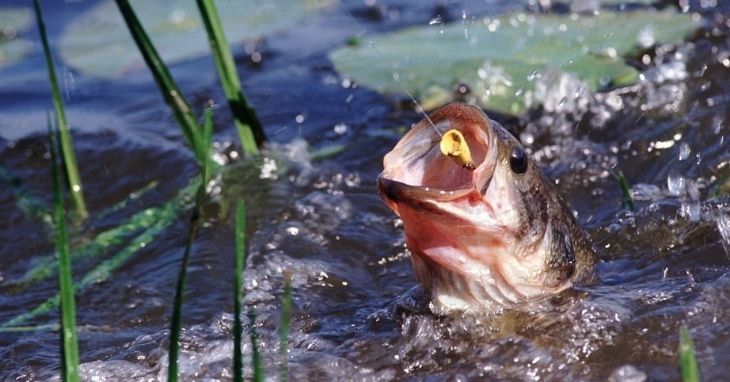
Preparing for fishing baits and lures can also be considered as another contribution to your success in freshwater fishing.
There are many baits out there available for freshwater fishing, such as cut fishing baits, leeches, dough balls, grubs and mealworms, minnows, insects, crayfish, eels, cured fish roe, and many more. You need to also think about what fish you want to catch as well.
If you are just a beginner or a new angler, finding the right bait and lure for fishing is the most difficult thing to do since there are various choices. However, you don’t have to worry, there is a guide with 3 main points to think about.
Considering those criteria plus some recommendations from local seasoned anglers will help you find the best freshwater fishing baits and lures. Here are the criteria that you need to consider.
- Target Species: first of all you need to ask yourself what fish you are going to catch as it will help you to know your target species and along the way, you will also know what they eat. This contributes a lot to choosing the bait that your target species eat.
- Live or Artificial Bait: this point helps you make the decision to choose the baits based on your preference and your past experiences in freshwater fishing.
- How Many Baits You Need: you need to question yourself how much bait you need in order to fish. However, as a general guide with this point, you can ask the local anglers their experiences and recommendations, and after they recommend the baits, you can choose the top 3 baits among their recommended baits.
As for fishing lures, there are also many options such as fishing jigs, poppers, spoons, plugs, spinners, plastic baits, tube lures, and so on. The fishing lures come in lots of sizes, shapes, and colors.
As a suggestion, you need to find more information and understand the environment that the fish live in, their behaviors. Hence, this will help you find the best freshwater lures and baits for your target fish species during different seasons of the year.
CONCLUSION
After reading all the above-mentioned details of freshwater fishing, we hope this article is useful for your freshwater fishing experience. To freshwater fishing, you need to understand the types of freshwater fishing you can try, with some knowledge of when and how to fish, and how to choose your fishing gear, baits, and lures.
This will also enhance your fishing experience in freshwater as well. Thus, we hope you enjoy reading this article, and hopefully, you will catch lots of freshwater fish species in your upcoming freshwater fishing trip.

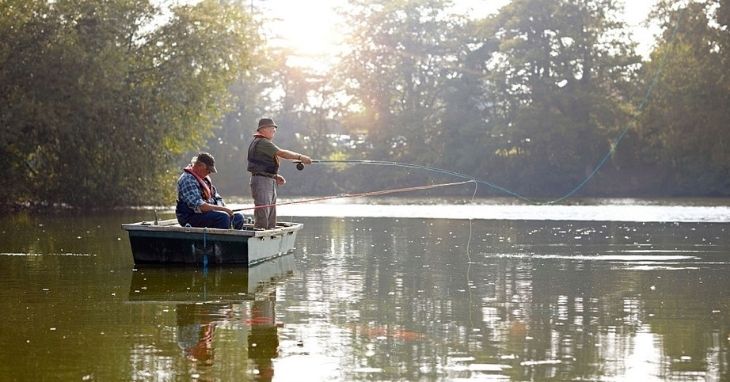
Leave a Reply